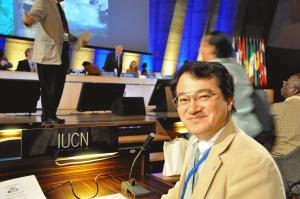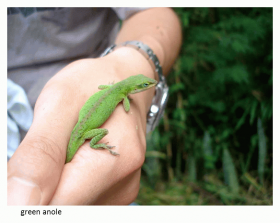26/08/2014
New Efforts for Controlling the Diffusion of Invasive Alien Species in the Ogasawara Islands
In June 2011, the Ogasawara Islands were inscribed on UNESCO's World Heritage List as the fourth natural heritage site in Japan. The UNESCO World Heritage Committee was required to evaluate efforts regarding countermeasures against Invasive Alien Species (IAS) and to make continued efforts to prevent their diffusion. In response to this, a Working Group for Controlling the Diffusion of IAS (Chair, Masahito Yoshida) was established under the Ogasawara Islands World Natural Heritage Scientific Council (Chair, Isamu Okochi), and the working group has started its new efforts.
The first effort of this working group was to review the diffusion routes of IAS in the Ogasawara Islands in order to clarify blind spots. As a result of this effort, we realized that we should place emphasis on the moving route from Iwo-jima to Chichi-jima where exotic ants are already invading and the material transportation from the main island of Japan to the Ogasawara Islands by cargo as well as by the Ogasawara-Maru, a cruise ship. In addition, risks from pets of residents in the Ogasawara Islands and imports of muddy nursery plants have been identified.
In March 2013, green anoles (Anolis calolinensis calorinensis), an IAS, were found in the south of Ani-jima Island known as a habitat for endemic terrestrial land snails and insects. Therefore, the budget for controlling the diffusion of IAS had to be used mainly for green anole countermeasures. During the US occupation, green anoles were diffused in Ani-jima and Haha-jima via Guam, and endemic insects of the Ogasawara Islands including the Ogasawara Cicada (Meimuna boninensis) and the Ogasawara shijimi (lycaenid butterfly, Celastrina ogasawaraensis) became almost extinct. If green anoles spread throughout Ani-jima, the value of the island as a treasury of native insects will be lost, and Ani-jima may potentially be removed from UNESCO’s World Heritage List. Also, carnivore planarians, New Guinea flatworms (Platydemus manokwari) live in Chichi-jima Island: the planarians are known as a natural enemy of the East African Land Snail (Achatina fulica). If New Guinea flatworms invade Ani-jima, endemic terrestrial land snails are likely to become extinct.
In order to prevent green anole diffusion, Japan’s Ministry of the Environment and the Forestry Agency installed fences in Ani-jima Island while paying strict attention to the diffusion of planarians. In order to prevent the diffusion of IAS to the other Ogasawara Islands, World Heritage Centers with baggage cleaning rooms are being constructed in Chichi-jima and Haha-jima. The working group published a manual in case that new exotic species are found, and conducted emergency training in Chichi-jima. In Ogasawara-mura Village, field surveys on pets other than cats and dogs have been carried out. Regarding the prevention of planarian invasion, the tepid bathing of muddy nursery plants is being examined.
In 2014, at the UNESCO World Heritage Committee, we received a question about the efforts on IAS in Ogasawara Islands from the representative of the Solomon Islands that have the East Rennel World Heritage Site. In the Ogasawara Islands, efforts to prevent the diffusion of IAS that have just been started can be a world model for conservation of island ecosystems.
(Masahito Yoshida, Professor, World Heritage Studies, Graduate School of Comprehensive Human Sciences, University of Tsukuba)












